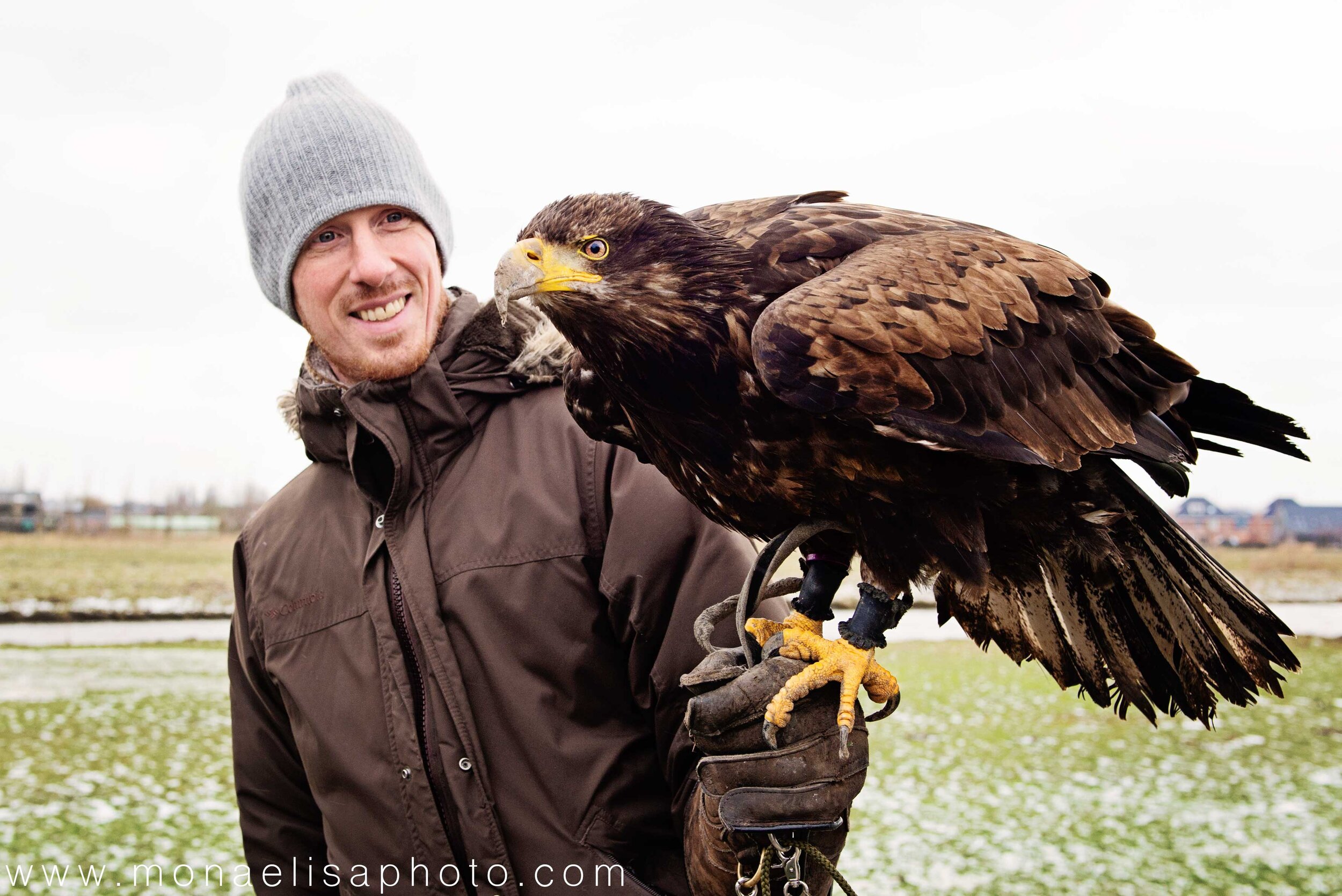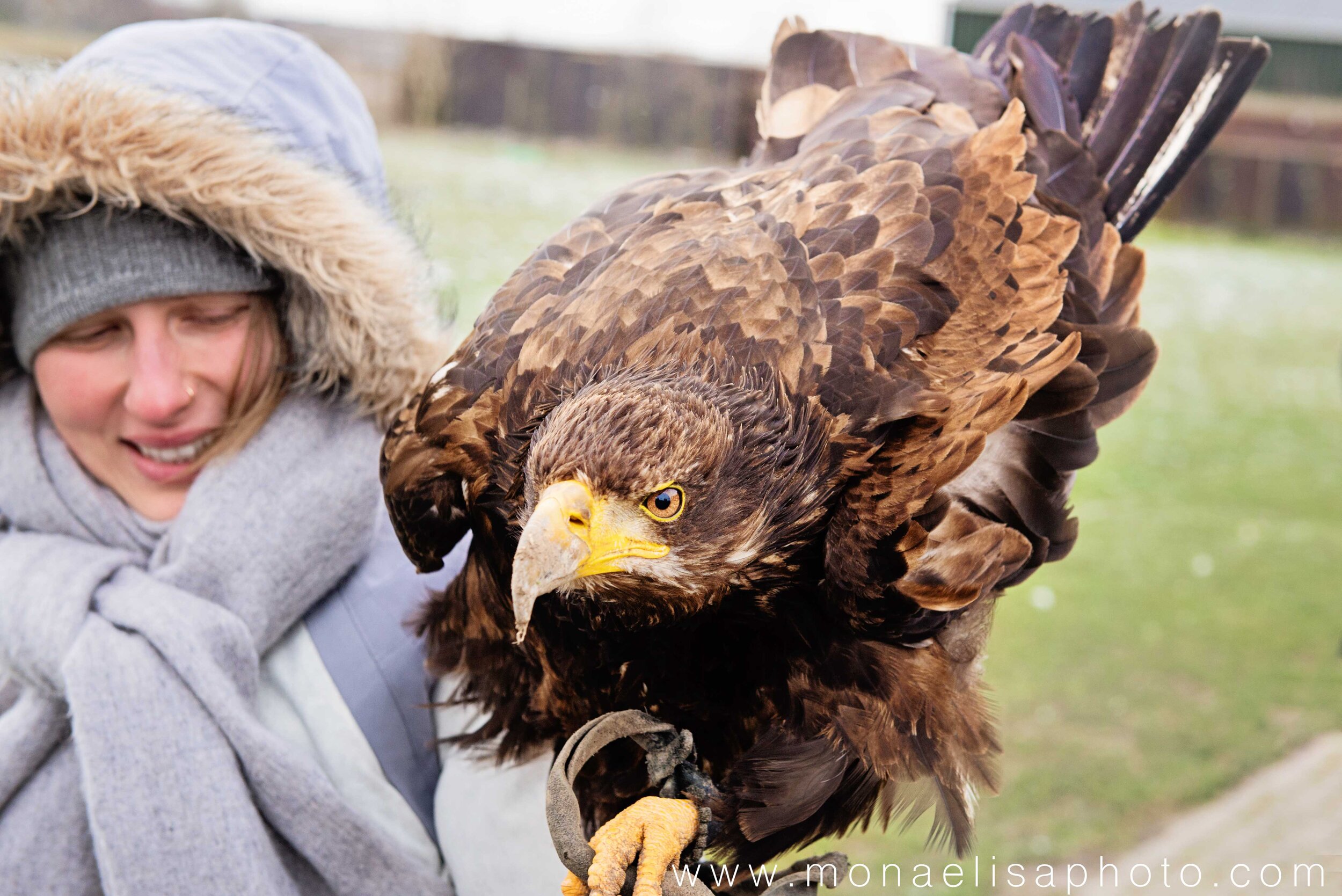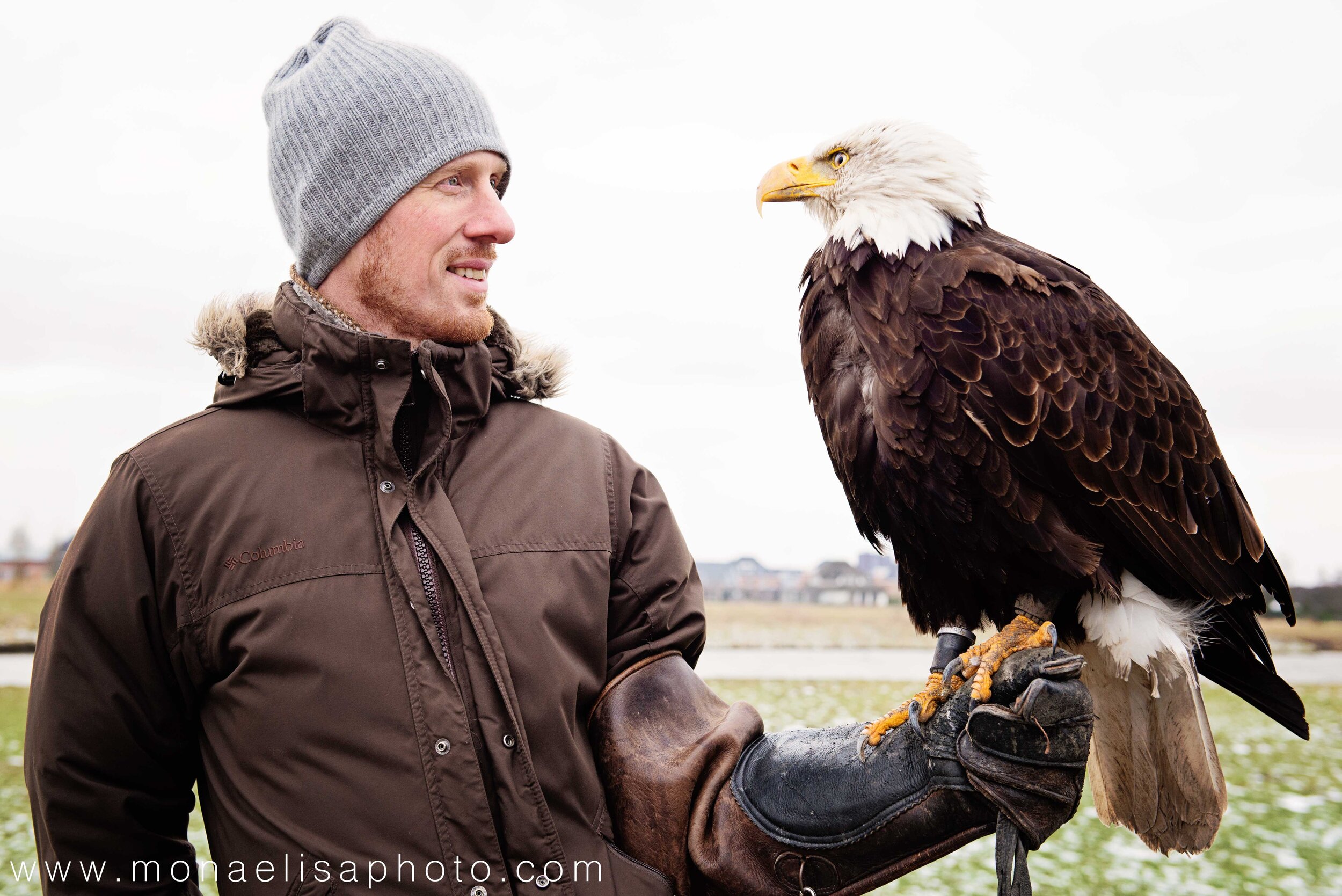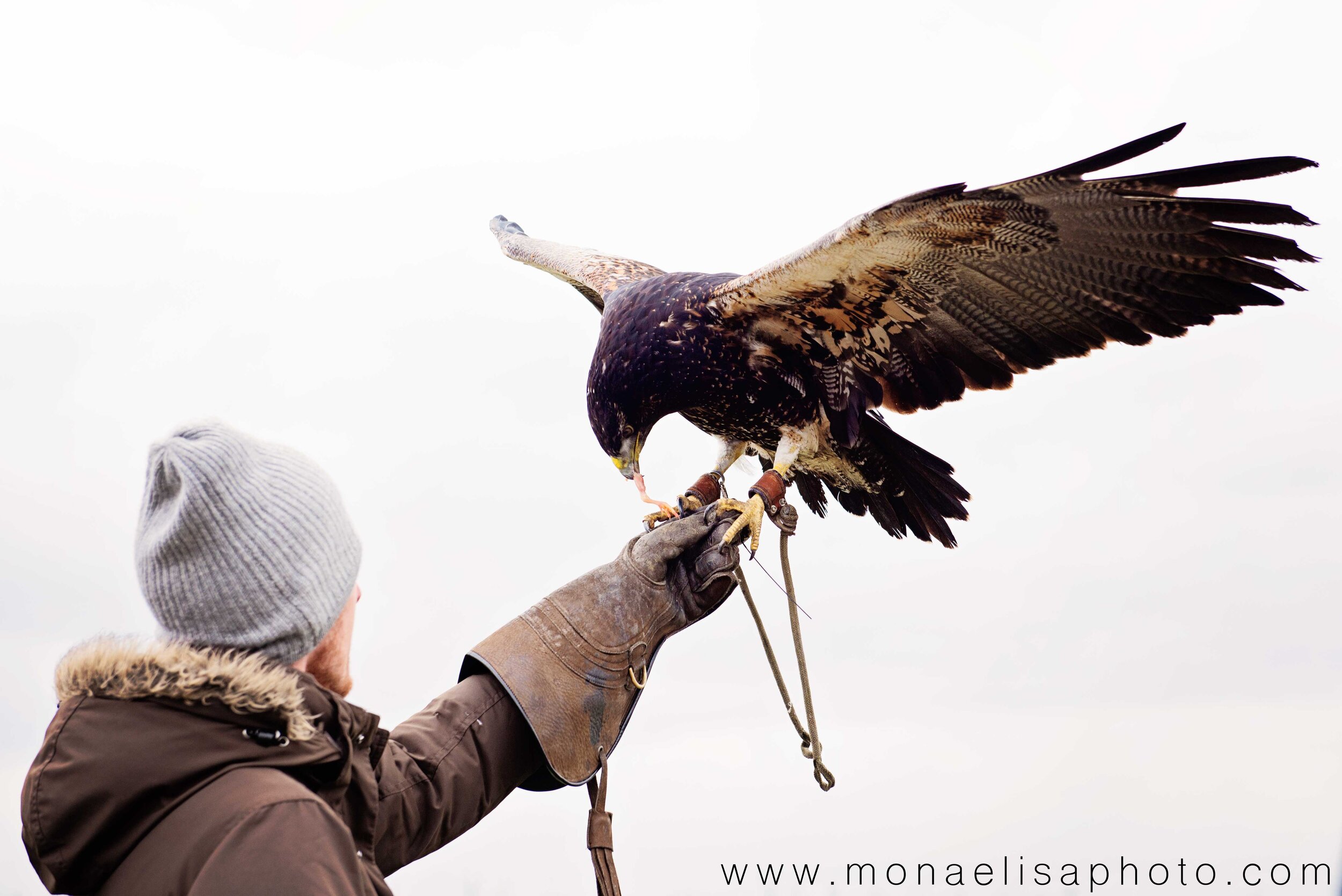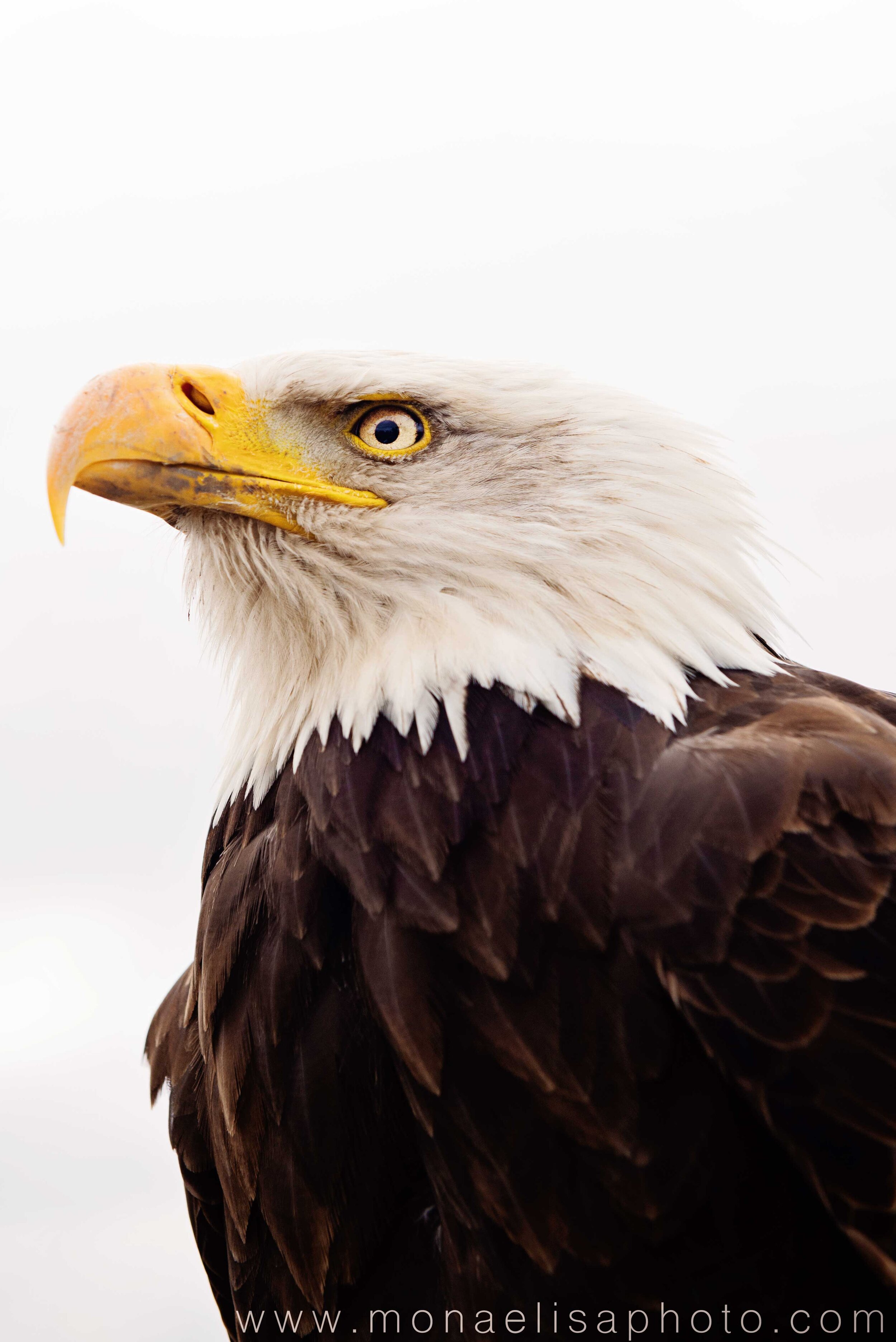Facing the Wind: An Encounter with Eagles
For just a little under a year, I’ve had these words play over and over again in my mind, “I am bold, no fear inside. Spread my wings, open my life. Like an eagle, whose home is the sky. I’m gonna catch the wind. I’m gonna catch the wind.” (You can listen to the song here). I’ve been fascinated by them, meditated on them and mulled them over in my mind. These words became even more special for me in October, as they became my main mantra while our lil’ sprout was coming into this world.
Fast forward 5 months, and I’m still being impacted by them…
This March we had the wonderful opportunity to take an eagle workshop in Berkel en Rodenrijs, Netherlands with the organization Birds @ Work Valkerij Manege. They are the largest falconry organization in the Benelux with more than 260 birds including birds of prey and owls.
We were able to handle and meet 4 birds of prey: an adult and juvenile American Bald Eagle, a Bateleur and fly a Steppe Eagle. They were each so incredibly unique both in appearance, personality, and I wouldn’t be able to name a favorite.
The most unique eagle we were able to handle was the Bateleur. They originally come from Sub-Saharan Africa but have also been found as far north as the Arabian Peninsula. Their name “Bateleur” pays homage to the French word for tight-rope walker in reference to the way in which this eagle is able to catch its balance in midair. An adult can weigh up to 2.6kg. They can fly up to a distance of 320km and fly up to 8 hours as they glide through the air. One of their most distinctive features apart from their colouring is their very short (and cute) tail. They are on the near threatened endangered list.
We also had the opportunity to handle both an adult and juvenile American Bald Eagle. They can weigh up to 6kg and have a wingspan of up to 244cm. They receive their characteristic white plumage when they are adult and ready for breeding. Until then they go through 7 subsequent stages where their plumage varies. They are a force to be reckoned with as they can reach heights of up to 15,000 feet and can swoop down at speeds of 320km per hour. And their eyes! We were both mesmerized by their colour – a light liquid gold and a gaze of such sheer intensity. Equally impressive is the force and strength in their talons: 250kg per square centimeter. Can you imagine?
If there was one moment that was most unforgettable for me was watching how the eagles reacted to the natural elements. It was a freezing day with the humidity and with the wind chill it varied between -10 and -12 as wind speeds surpassed 40km/h and gusts of up to 65km/h. The falconers kept telling us, “Face the wind. Face the wind,” as we handled these beautiful creatures
As they rested on our arms, there was no mistaking when the eagle would sense a wind gust coming. The body language completely changed as if they were ready for total lift off. The gaze in their eyes switched from one of neutrality to one of total excitement, concentration, and zeal as if they were telling us, “This is what I was born to do.” For me, there was no mistaking that these were wild animals and they were made to fly. To see this touched my heart so deeply.
The conditions were difficult with the high wind speeds. We were not able to fly with the younger American Bald Eagle so they brought in a beautiful Steppe Eagle for us to fly with. Steppe Eagles are found in Europe, Asia and Africa. They can weigh up to 5kg and have a wingspan of up to 214cm. It was then that we could really understand that although eagles fly, they aren’t meant to really flap their wings as other birds normally do to traverse distances. Eagles have very large wings which means that they require exorbitant amounts of energy to flap them in order to fly.
Instead, they are meant to soar!
They flap their wings to create lift but once that’s been accomplished, eagles spend most of their time soaring and gliding through the air. They soar either by finding rising air currents or via dynamic soaring which doesn’t rely on rising air currents. Instead it uses the differences in wind speeds between the ground and higher altitudes. The eagle climbs into the faster airflow by facing the wind and begins a cycle between heading downwind and then upwind between the different airflows to gain speed.
Foolishly, I thought soaring for an eagle requires no work or rather it is easy work. However, they are in a constant state of flux, switching between airstreams, speeds, going downwind and then up again and using opposing forces to gain both speed and momentum. Let me say that again, using opposing forces to gain both speed and momentum. Isn’t that amazing? (And I haven’t even started talking about how certain obstacles like ridges or mountains actually provide the best lift as the wind is forced to flow up the side of a mountain).
So often I feel like I shy away from adversity and fierce winds. I make excuses, “It’s too hard. I’ll fail. I’m afraid, etc.” I tend to look 50 steps ahead and feel defeated before I even start. What if I just turned my face towards the wind with single focus and zeal? What if I solely focused on catching the wind from that next airflow and trusting that when I need to change direction, the subsequent airflow will come just at the right time? Or instead of becoming one hot mess when I face an obstacle that seems insurmountable seeing it as an opportunity for the perfect ‘lift’?
My friends, I can’t help but marvel at nature. What an incredible few short hours spent with these astonishing birds.
As we have been wrestling with changing directions in our personal lives as of late (becoming new parents has a tendency to do that, LOL), I’m storing all these lessons in my heart and mustering the courage to face the wind.
What are you mustering the courage to face?
Make sure to check out our web shop for beautiful fine art botanical prints to adorn any space you call your own. Let nature in with us!
Want more? Stay up to date, connect with us and be part of our nature-loving, adventure-seeking, and obsessed with all things botanical community! Follow us on Instagram, Facebook or Pinterest.


